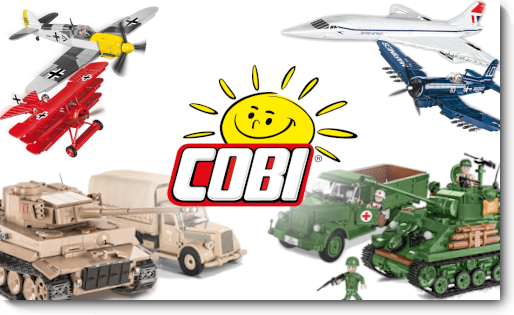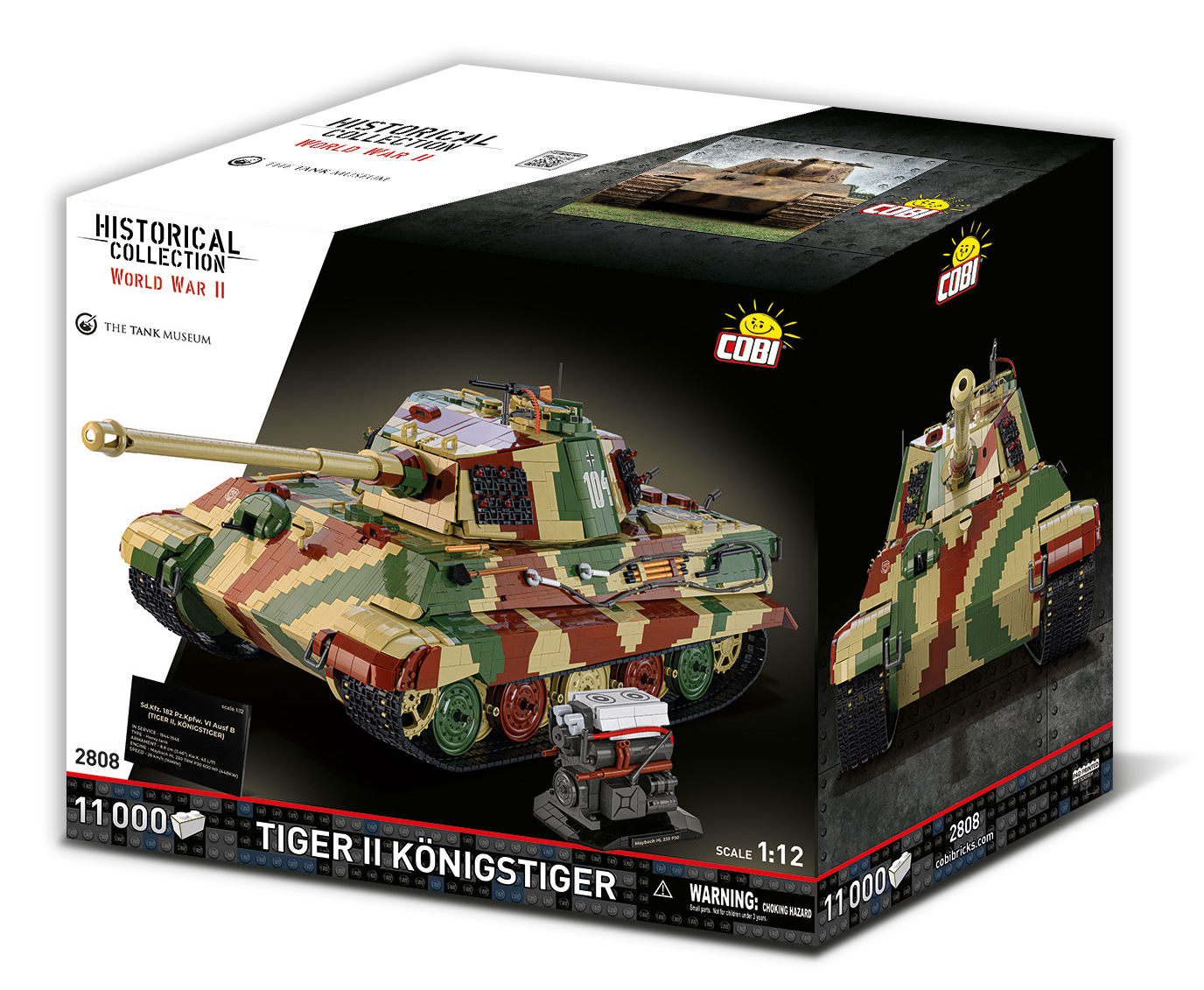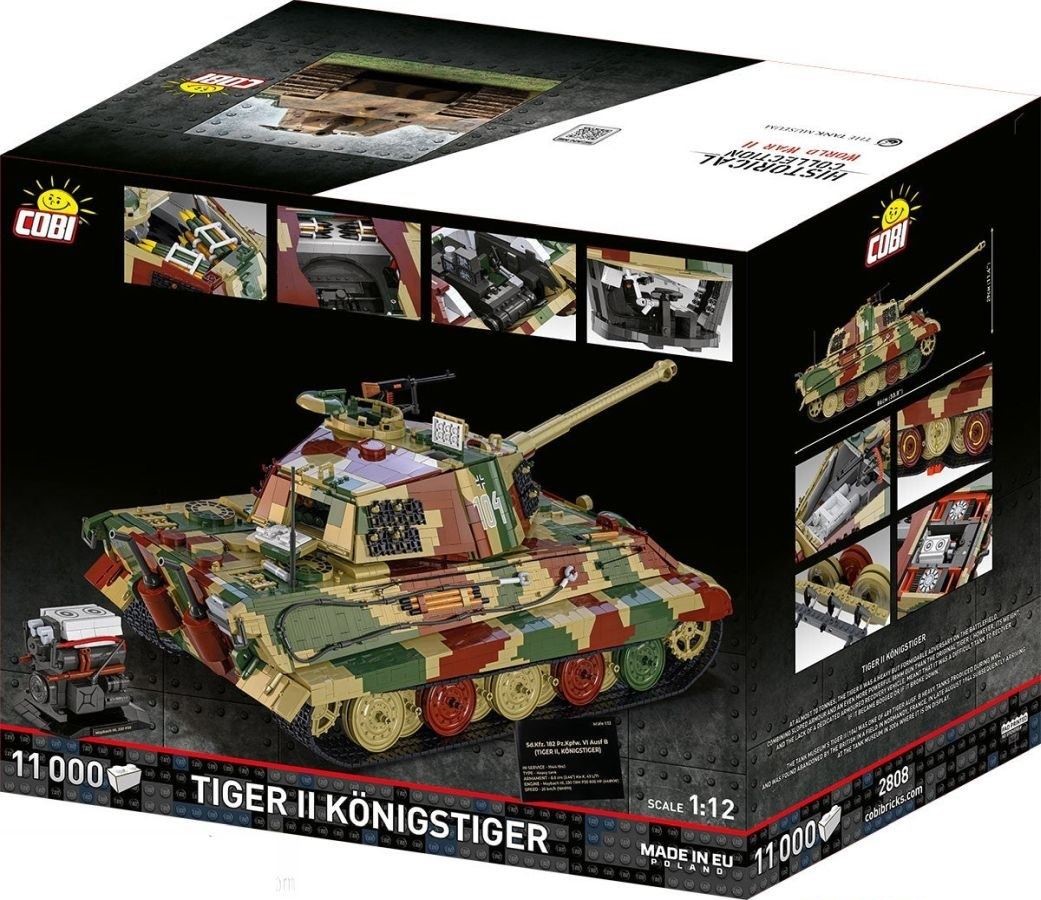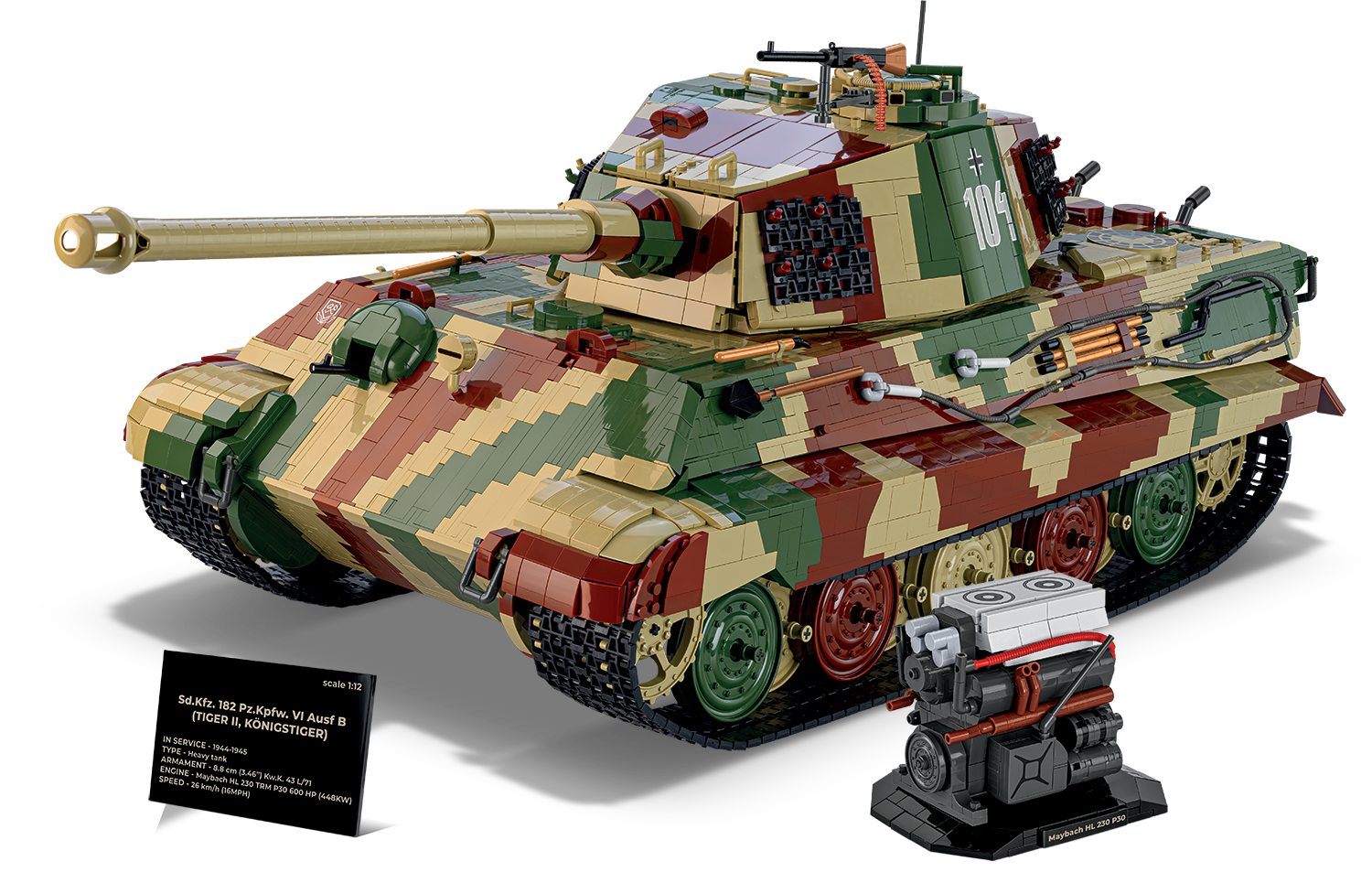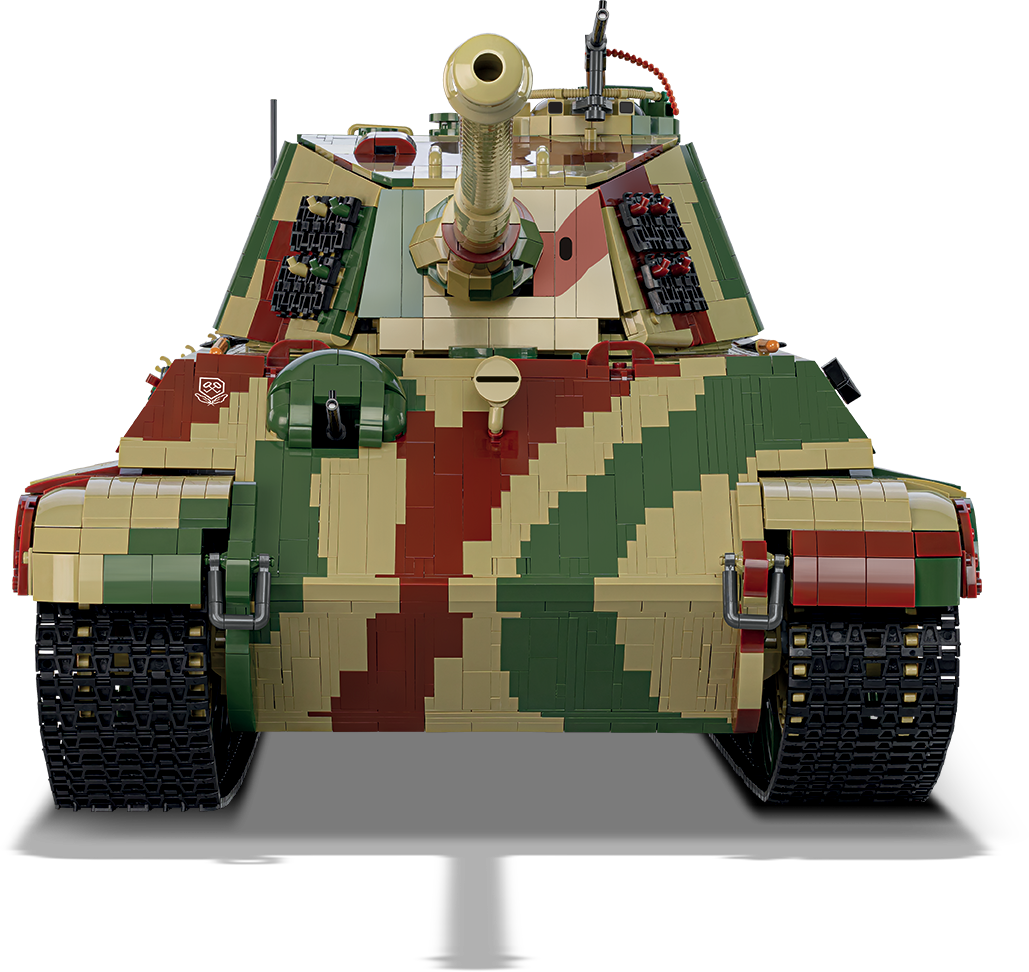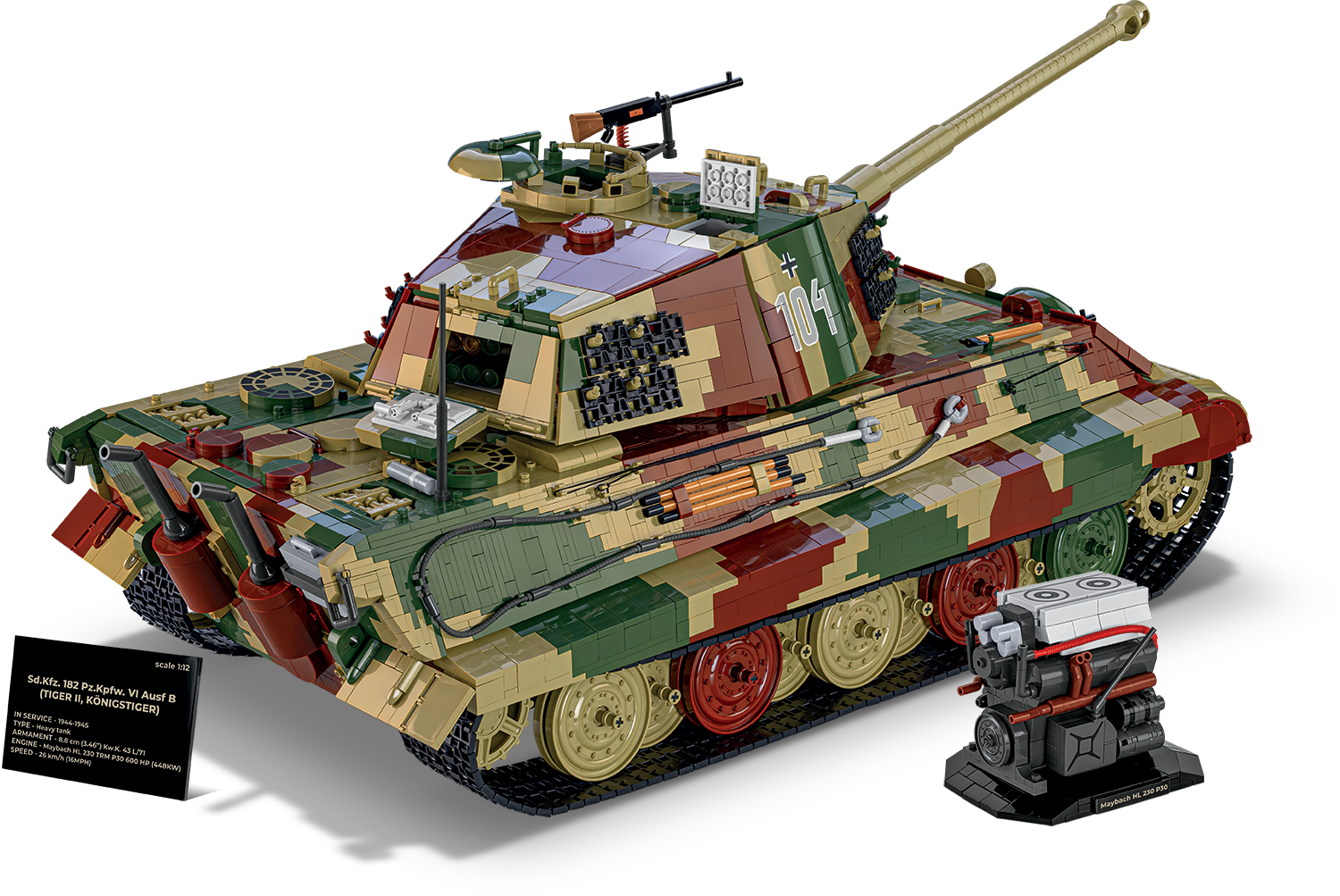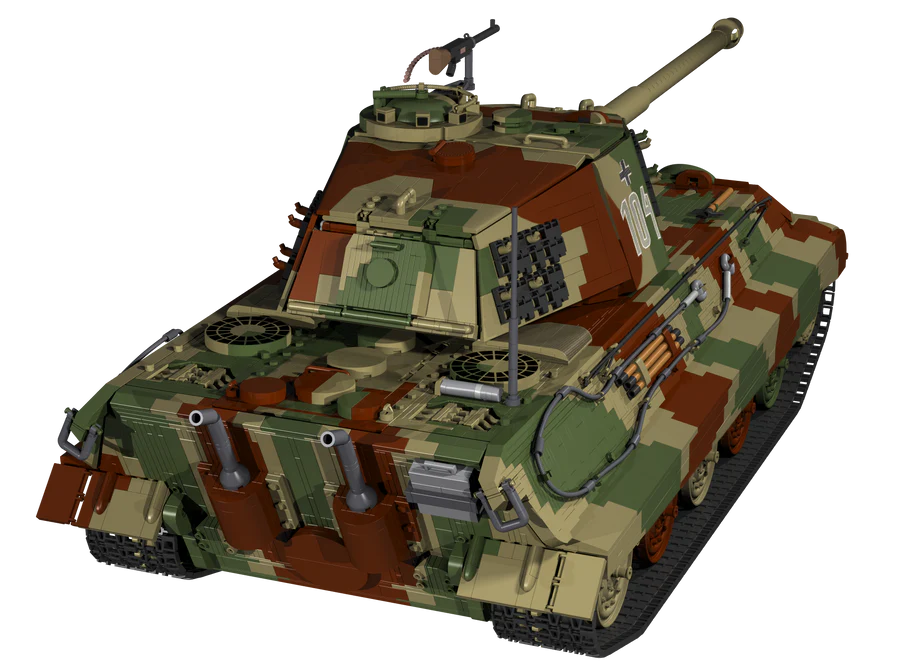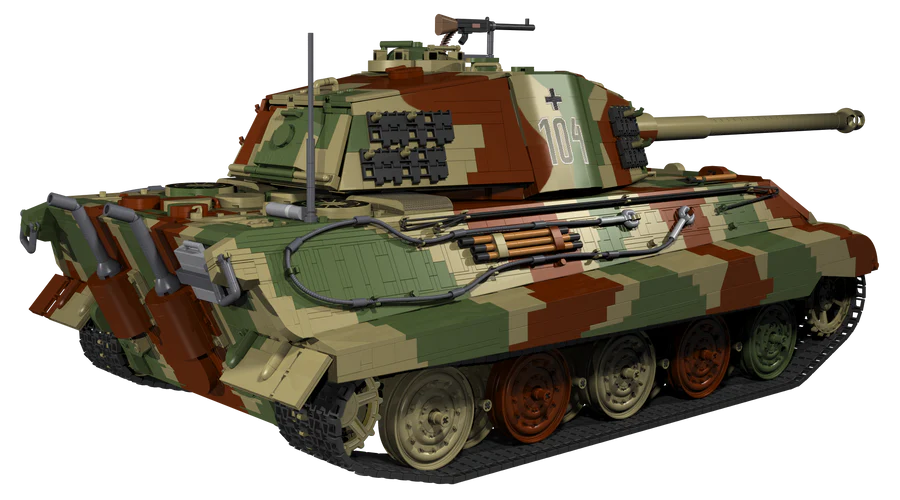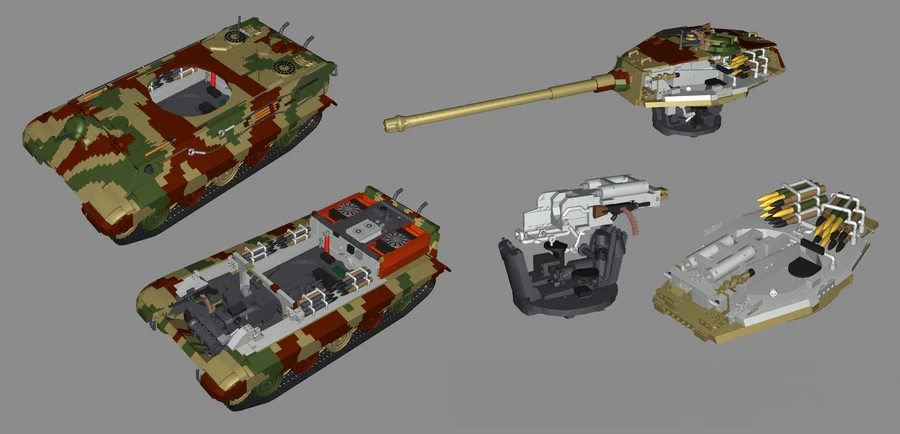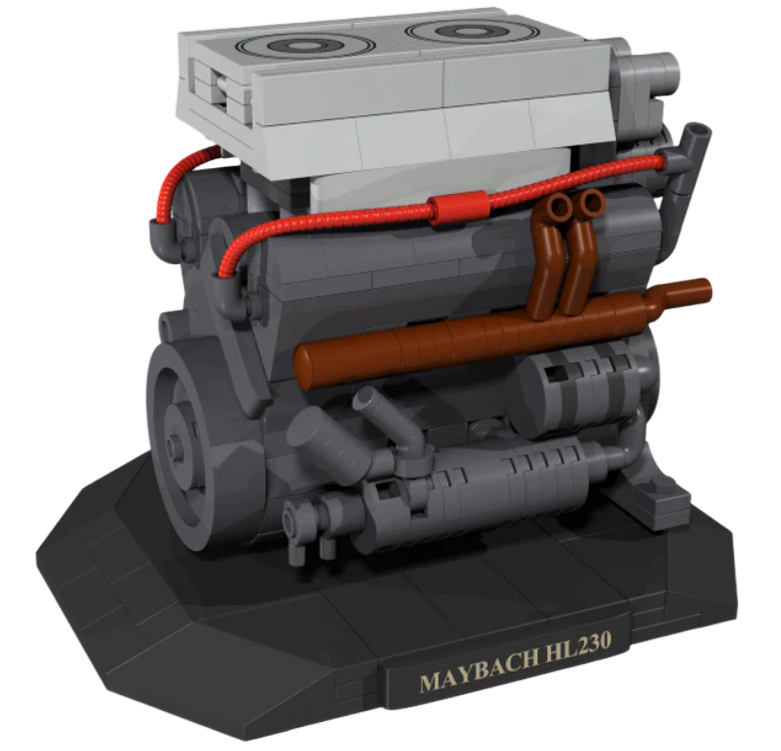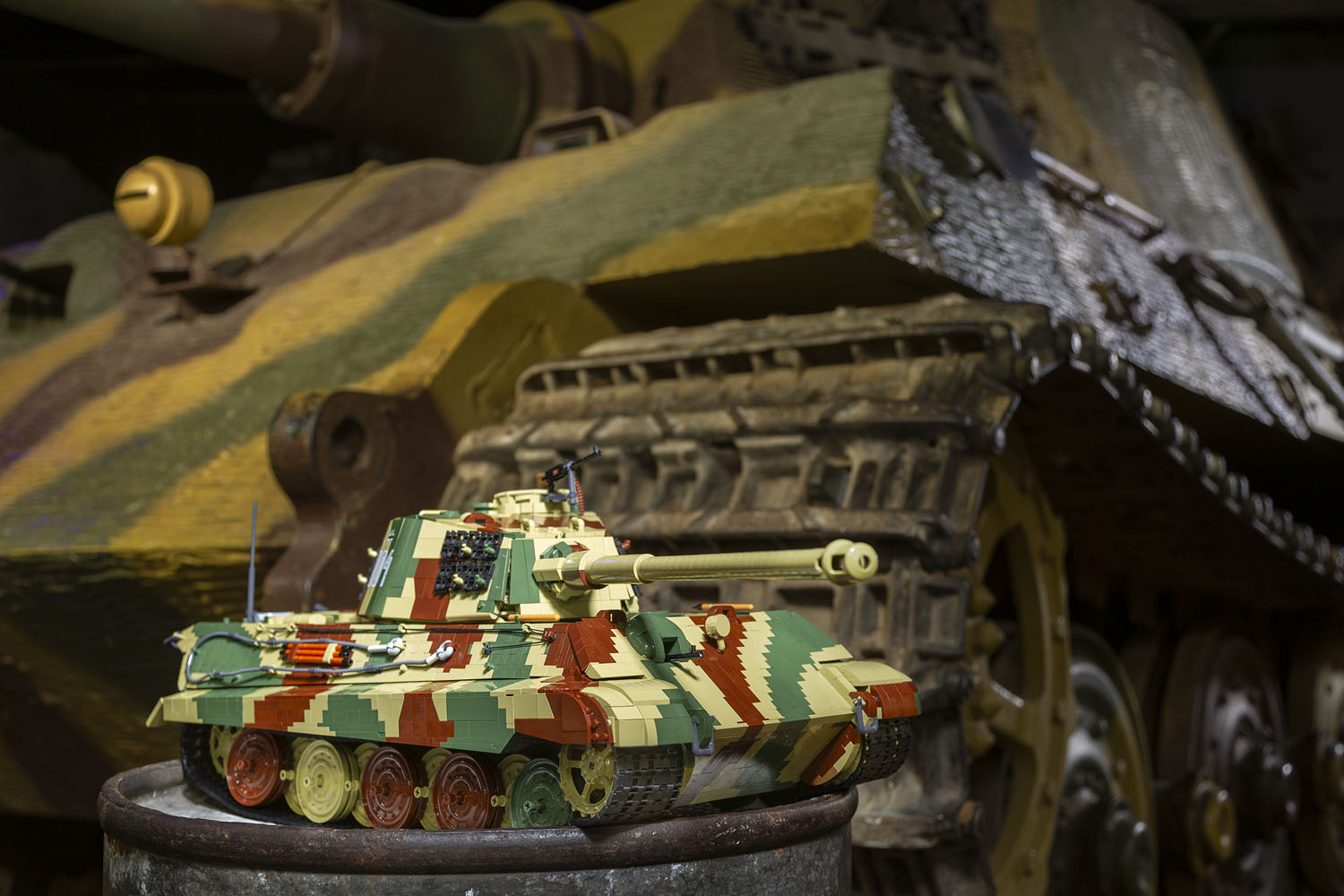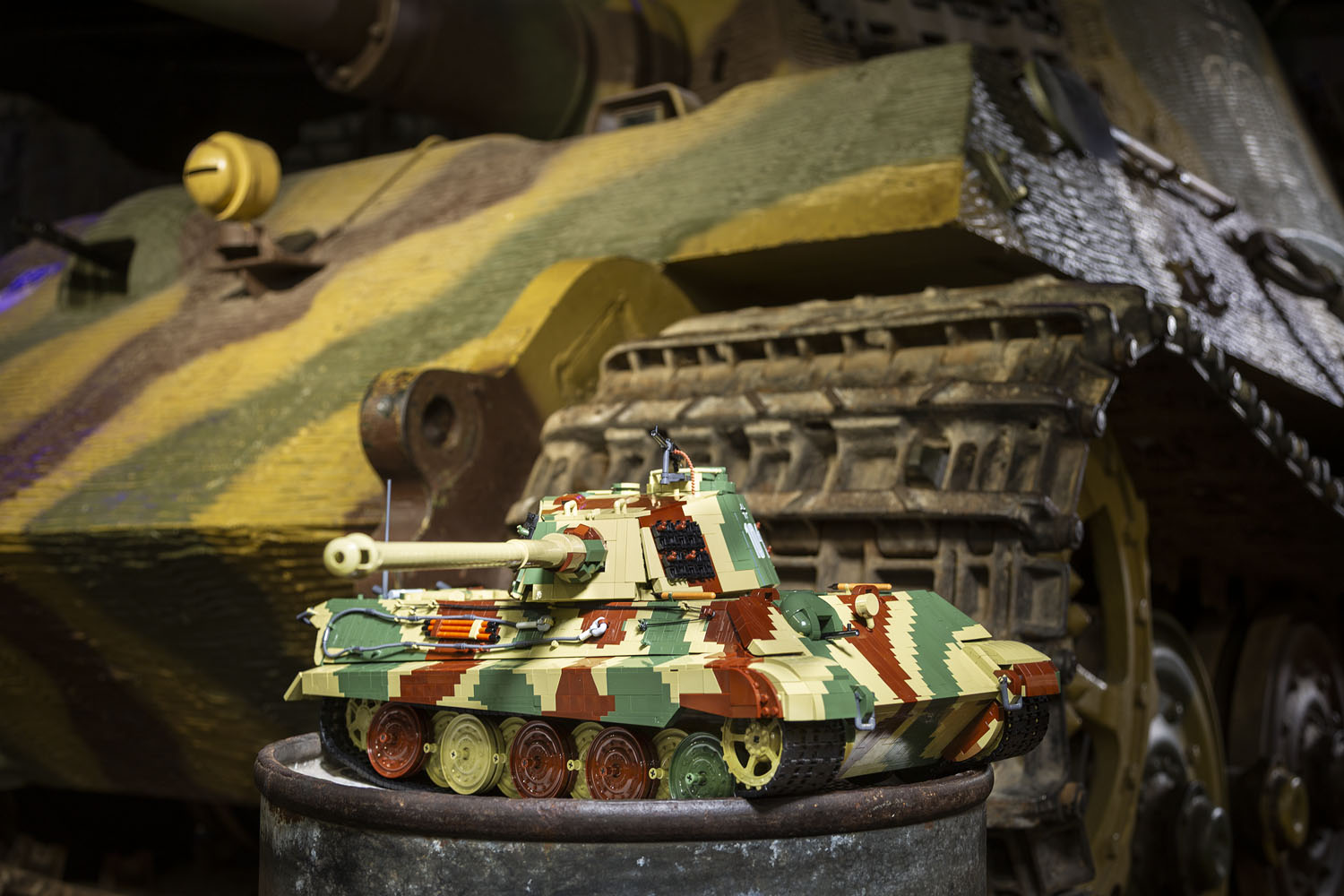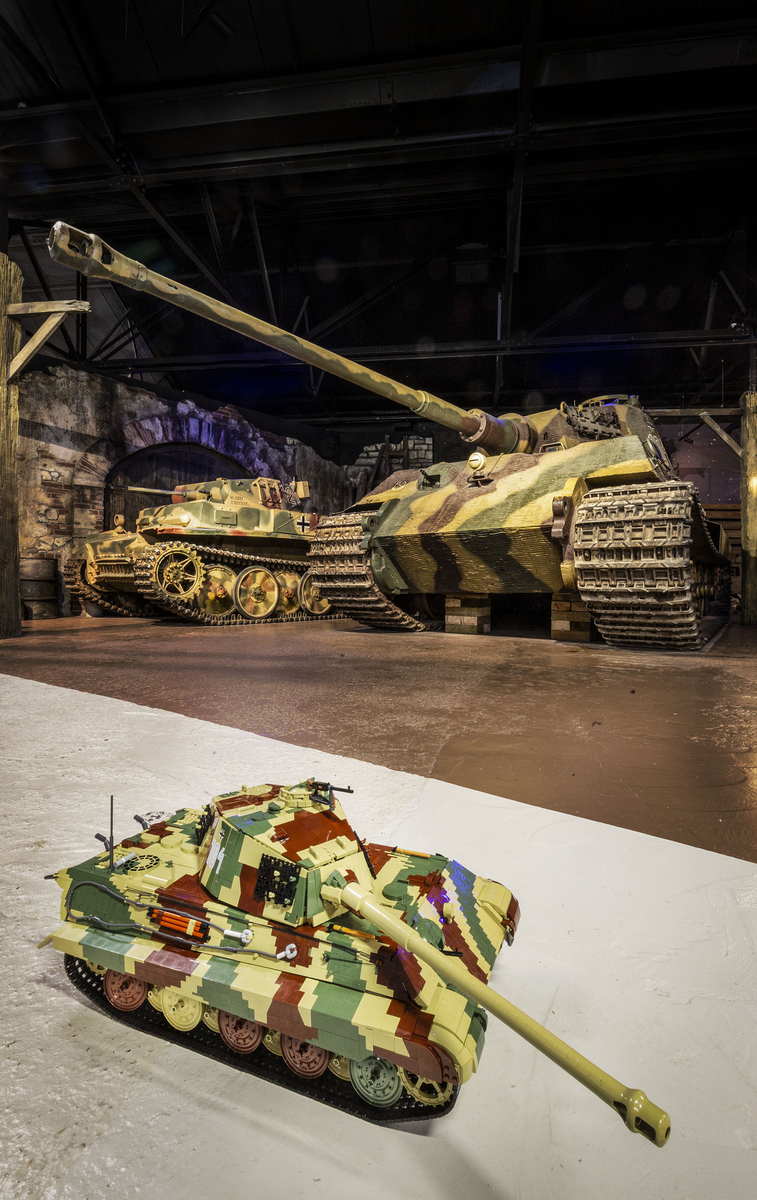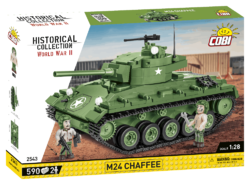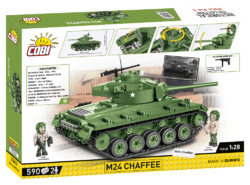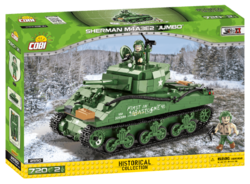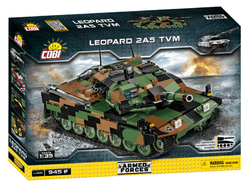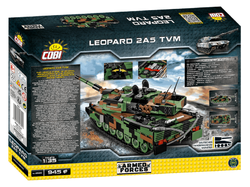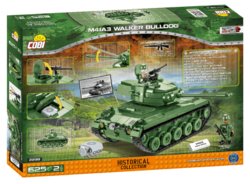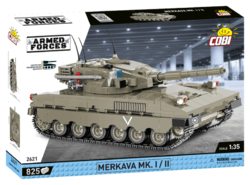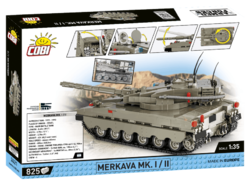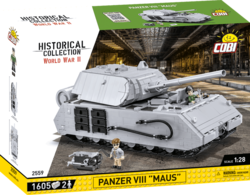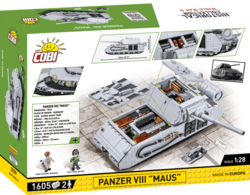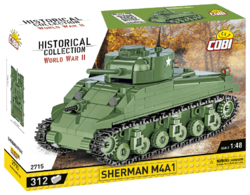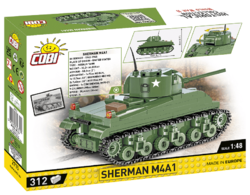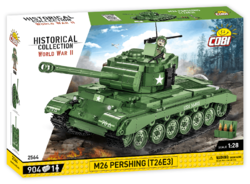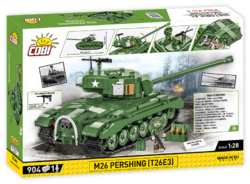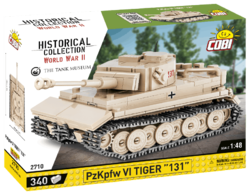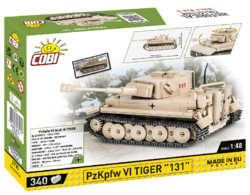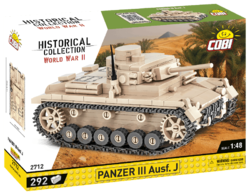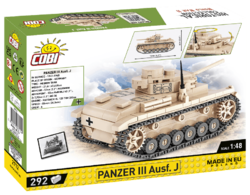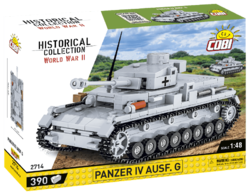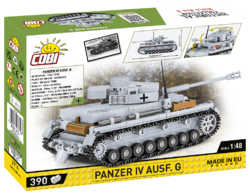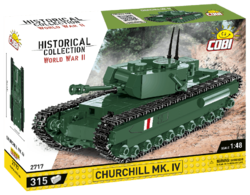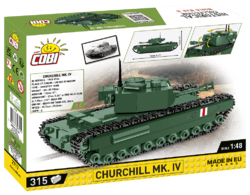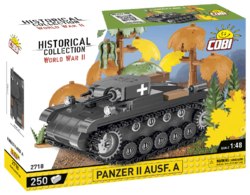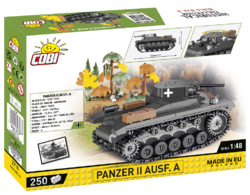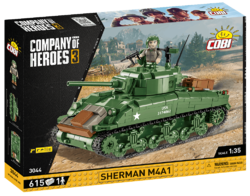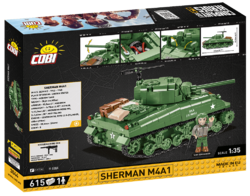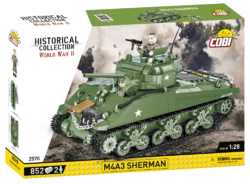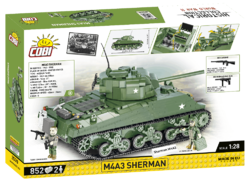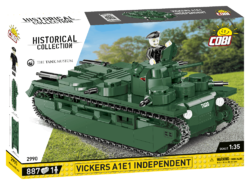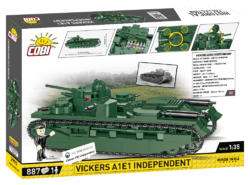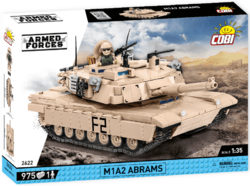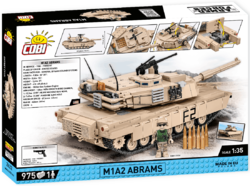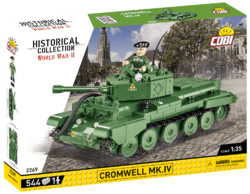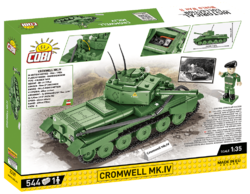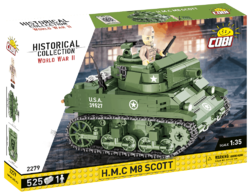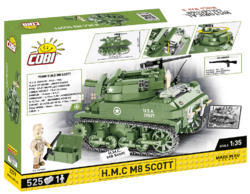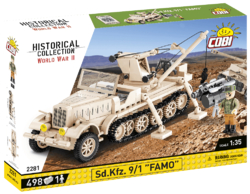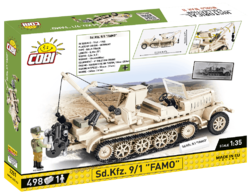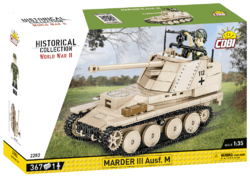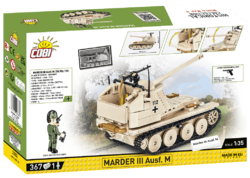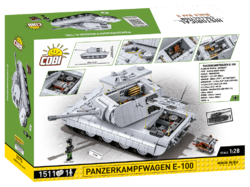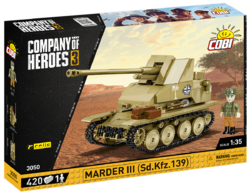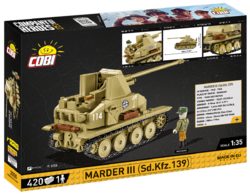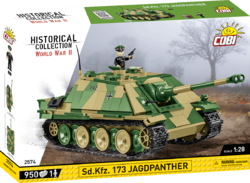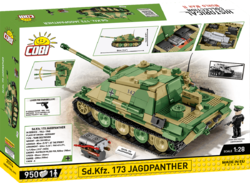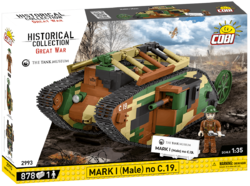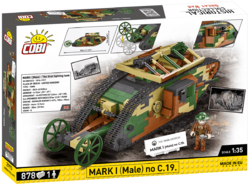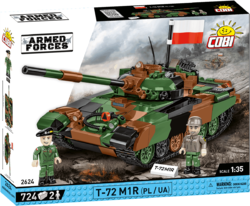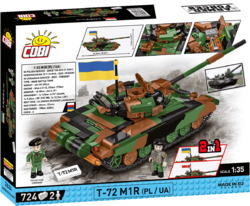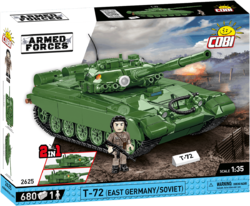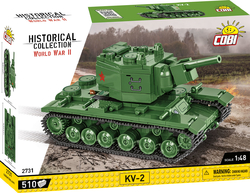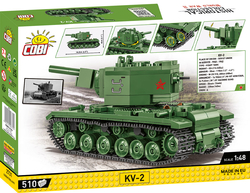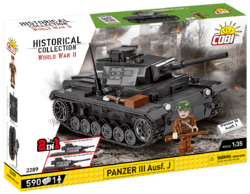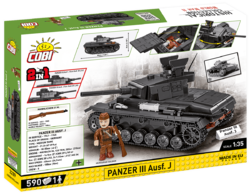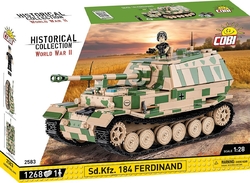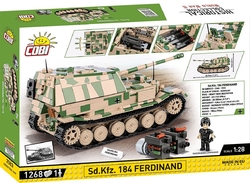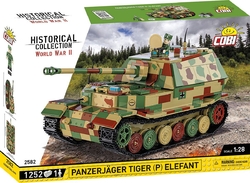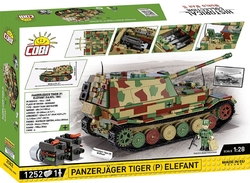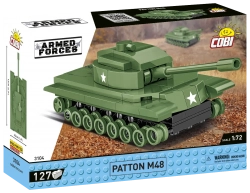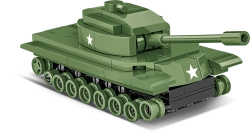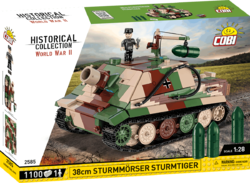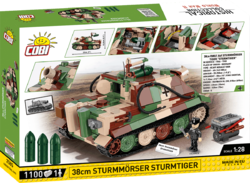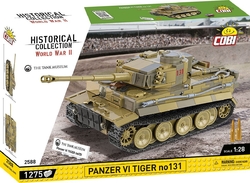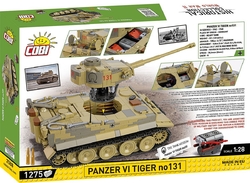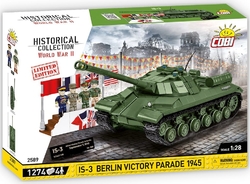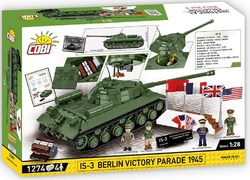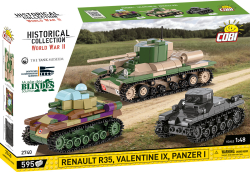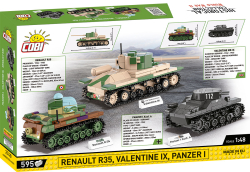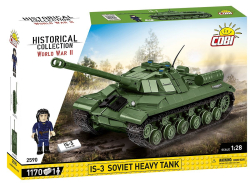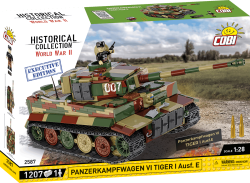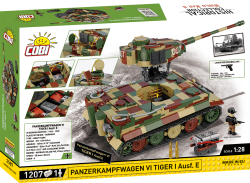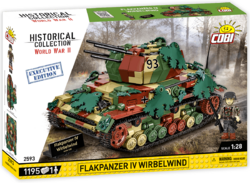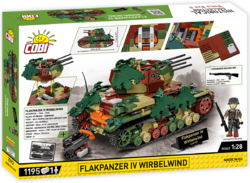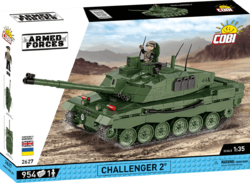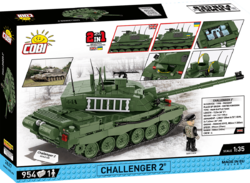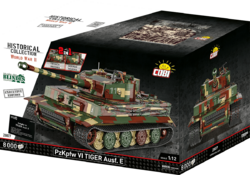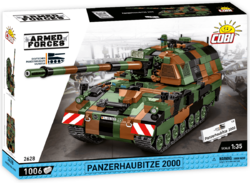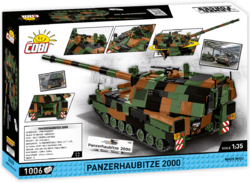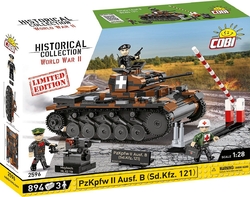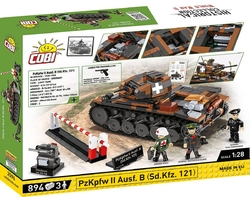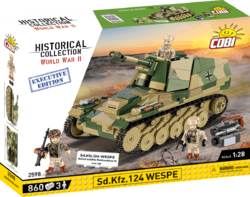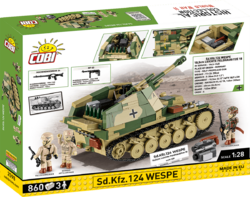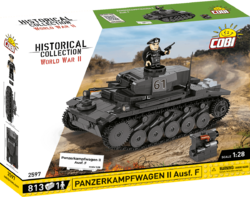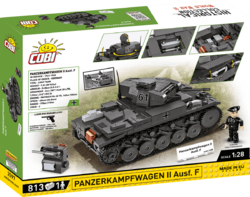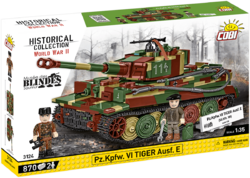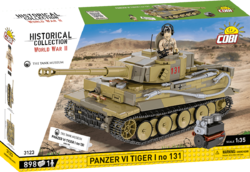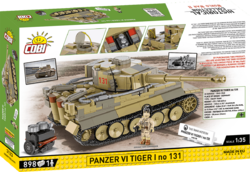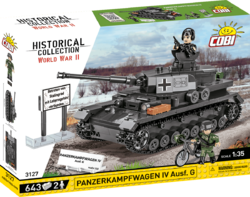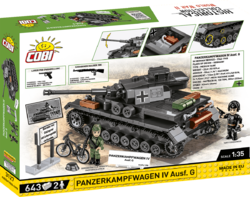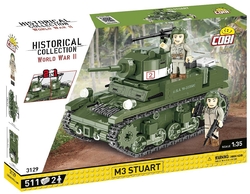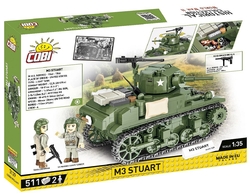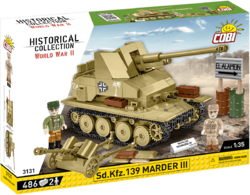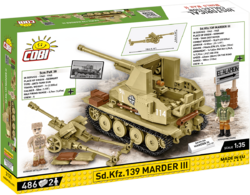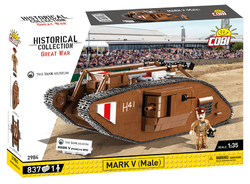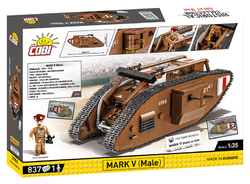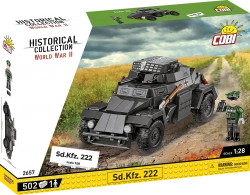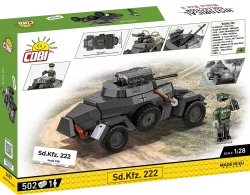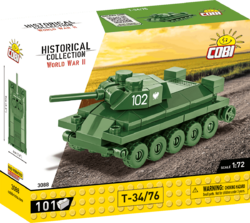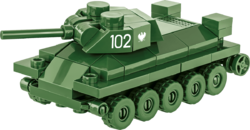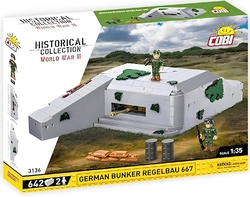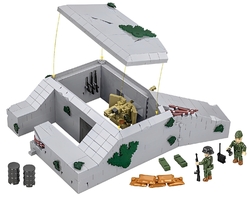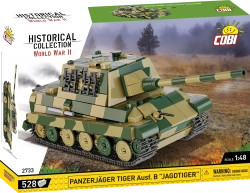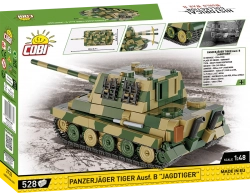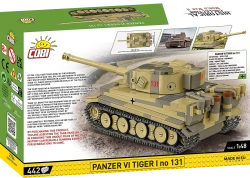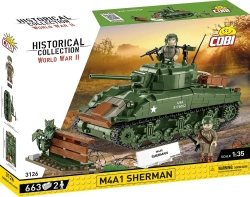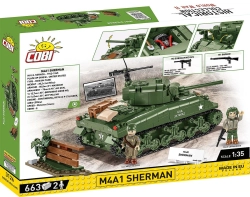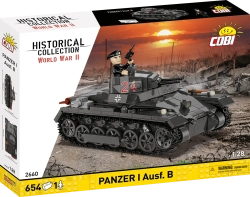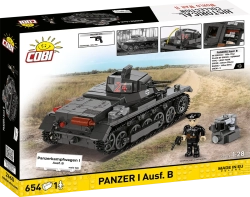| List Number: | COBI-2808 |
| EAN: | 5902251028084 |
| Warranty: | 24 months |
| Manufacturer: | COBI |
| Loyalty Points: | 100 |
| Free shipping | |
| Price excluding VAT: | 16 527,92 Kč |

“Pre-orders will be shipped from October 10, 2025.”
Did you know: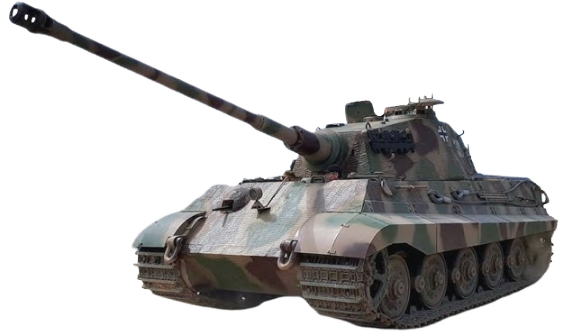
- The German factories Henschel and Krupp drafted the design of a new tank in 1943 as the successor to the Tiger I.
- The first prototype was presented to the Reich Armament Office on October 20, 1943.
- Ferdinand Porsche, born in Vratislavice nad Nisou, contributed to the development by designing a combined diesel-electric drive.
- However, the standard Henschel design with a gasoline engine entered serial production, because Porsche’s solution required large amounts of scarce copper for the electric motors.
- Several vehicles were fitted with an exceptionally high-quality, advanced optical sight, allowing for accurate long-range fire.
- The KwK 43 L/71 gun could penetrate 180 mm of armor at a distance of 500 meters.
- The “Royal Tigers” were first deployed on the Eastern Front in August 1944.
- Although it was the most powerful tank of World War II, 11 vehicles were destroyed in combat or bogged down in mud during the first days of deployment.
- The Königstiger faced competition only from the Soviet IS-2 or, in the Ardennes, the American M26 Pershing.
- A total of 492 units were produced.
- Production was so complex and costly that the German economy simply could not build more.
- Even on May 9, 1945—when the world celebrated the end of the war—fighting continued near Třeboň in Bohemia.
- A group of three Tigers tried to break through to American lines, and one command Königstiger became stranded in a waterlogged meadow, where it remained a local attraction for weeks.
- This particular tank, number 104 (chassis no. 280 093), was built by Henschel in July 1944. It was assigned to 1st Company of SS-Schwere Panzer-Abteilung 101 and was one of two staff vehicles.
- The tank’s commander was Oberscharführer Sepp Franzl, who, with his crew, was committed to the Seine counter-offensive on August 23, 1944.
- The assault group consisted of four Königstigers. Over 14 days the unit suffered heavy losses, leaving only vehicle no. 104.
- In fighting with advancing Allied forces, the tank was likely struck in the flank near Aux Marais on August 29, 1944, and subsequently abandoned by its crew.
- Only in 1945 was the abandoned tank recovered by the Royal Technical Section and transported to England’s Fighting Vehicle Proving Establishment. In 2006 it was transferred to The Tank Museum in Bovington, where it joined the museum’s extensive collection.
Technical Specifications: 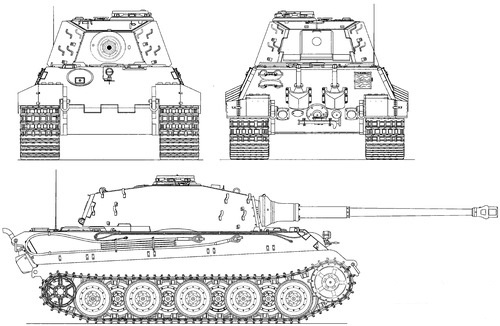
- Dimensions: length 10.29 m (7.38 m without gun), width 3.76 m, height 3.09 m
- Weight: 68,500 kg
- Armor: frontal 185 mm, side 80 mm, rear 80 mm
- Powerplant: gasoline 12-cylinder 23.1 L Maybach HL230 P30 engine, 515 kW
- Top speed: 38 km/h on road, 15–20 km/h off-road
- Fuel capacity: 860 L
- Range: 170 km on road, up to 120 km off-road
- Main armament: KwK 43 L/71 88 mm gun
- Secondary armament: 2 × MG 34 7.92 mm machine guns
- Crew: commander, gunner, loader, driver, radio operator
From the testimony of captured tank commander Sepp Franzl, August 30, 1944:
“It was just after noon. For several hours we had been retreating along broken farm tracks toward the northeast. The roads were crowded with vehicles and wounded— even heavy tanks like our Königstiger moved like snails. Our 104 was the last of the original company. Only we remained. We kept the engine running, but with every passing kilometre we felt something was wrong. The right track kept jamming and the idler wheel was humming. Through the optics I spotted silhouettes of Shermans—three, maybe four. They weren’t coming straight at us but were flanking the wood we were heading for. At that moment a shot came from the left. The shell didn’t penetrate the armor, but the wheel suspension was damaged. We abandoned the tank. We crept along the road toward the wood, but there the waiting British forces captured us.”
Product video
| Number of figurines | 1 pcs |
|---|---|
| Recommended age | 10+ |
| Scale | 1:35 |
| Dimensions after assembly | 30 x 11,5 x 10,5 cm |
| Box dimensions | 44,5 x 27,5 x 7 cm |
| Number of pieces | 802 pcs |
| Package weight | 895 g |
| Contains luminous blocks | No |
| Material | Plastic |
| Collection | World War II |
| Compatible with other brand of kits | Yes |





